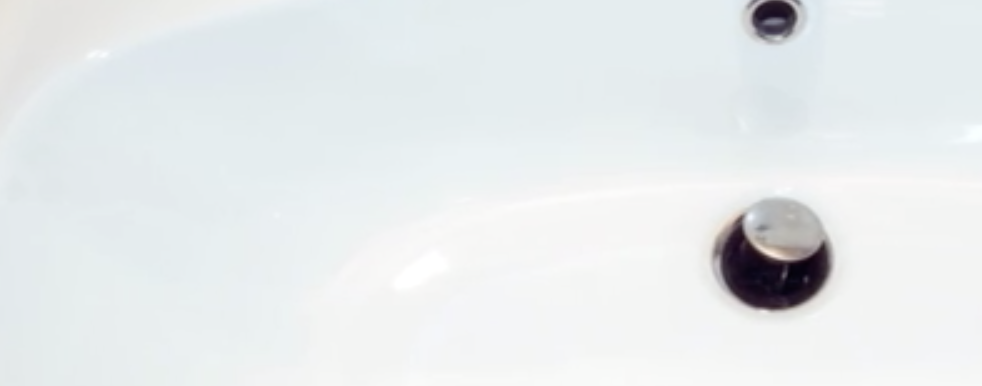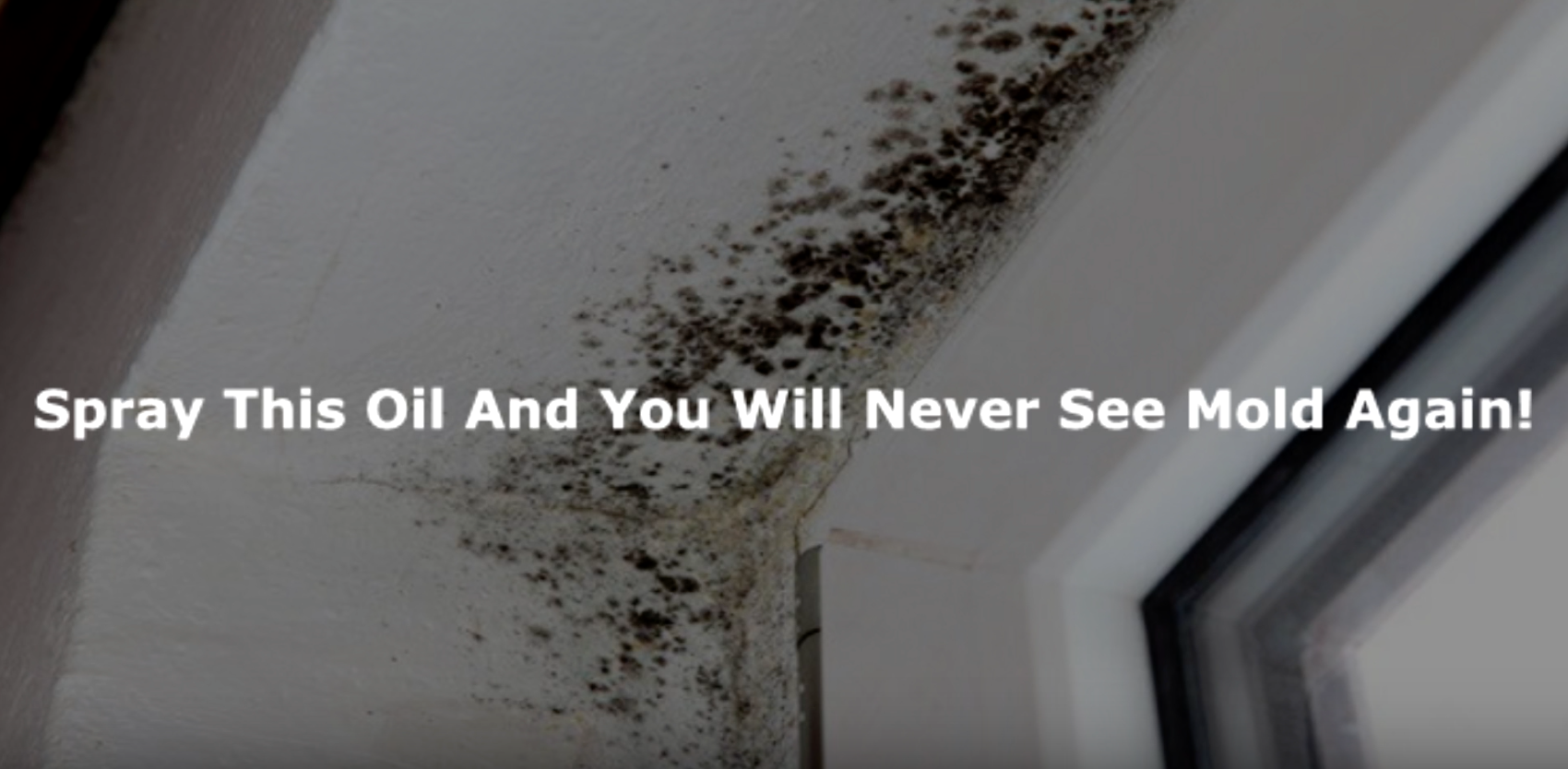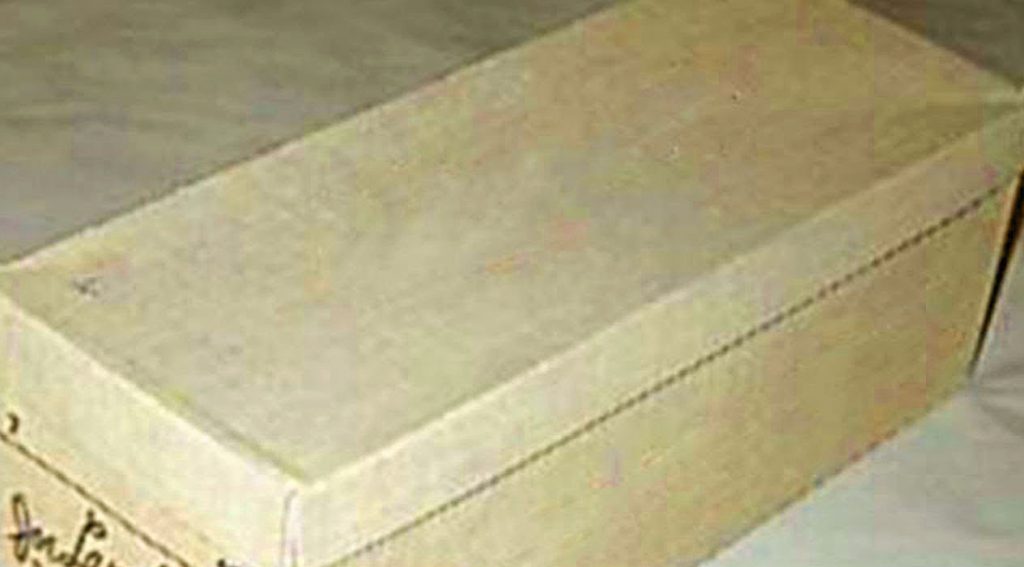Mom Had No Idea Why Her Baby Was So Sick. Then She Took The Top Off His Sippy Cup And Saw THIS

image via – youtube.com
Although having young children get sick is a normal part of parental stress, what you are about to hear in the video below, is just horrifying! Having your child become ill, for no apparent reason, and to have symptoms get worse over time instead of better, is any parent’s nightmare.
Penny Powell recently shared photos on Facebook, after a good friend of hers found out why her son had been chronically ill. The boy’s father, Simon, had a suspicion as to why their young son wasn’t getting better, and he turned out to be right. The boy’s ‘sippy cup’ had a leak-proof spout, and when the Simon inspected it, he noticed an awful odor coming from it.
This feature, which makes these cups so convenient for parents, is sealed. When Simon cracked the spout open with a knife, he found something growing there that explained his baby’s illness…MOLD!!
His son had been drinking from a mold infested cup! Needless to stay he was outraged, disgusted and frightened for his son’s well-being. He took pictures and when Penny posted them on Facebook, other parents began sharing the same thing. They had all been using Tommy Tippee Cups.
The company’s response to this finding was quite lame, as you will hear in the video; it should be said that there are several other manufacturers that have a similar design in which the sealed spout is a breeding ground for mold. As mold can cause sinus infections, throat irritation, asthmatic symptoms, and chronic eye and skin irritation, it is strongly recommended that any such cup be discarded.
Please SHARE this with your family and friends
7 Signs and Symptoms You Have Mold Illness and Do Not Even Realize It. Good To Know.

If you ever spot mold inside of your home, the chances are high that there’s likely a whole lot more growing in places where you can’t see. Even if you think your place is spotless and don’t see any visible signs, there’s definitely mold lurking somewhere, whether it’s in the dry wall or cracks and crevices around your home. That’s because the pesky fungi is impossible to completely avoid and can be found just about everywhere in the world. The most common indoor household areas include damp, warm, and shady spots, which makes bathrooms and basements the perfect place for mold to grow.
As nasty and gross as mold looks and sounds, the real issue is the harmful impact that it can have on human health. Many types of mold are extremely toxic, some are even deadly, yet it’s difficult to determine what types of mold you may be dealing with. According to the CDC’s online mold fact page, it is estimated that there are anywhere between 10 and 300 thousand different types of mold!
Included among the common indoor varieties is the widely feared Stachybotrys Chartarum, aka toxic black mold, which produces mycotoxins that are capable of causing a number of serious health issues. In addition to mycotoxins, which are toxic chemicals produced by mold, countless numbers of tiny, invisible spores also get released as mold grows and we end up breathing and ingesting both of these toxins directly into our bodies.
When mold enters our systems it can cause what’s generally known as ‘mold illness.’ There are a variety of health problems and complications encompassed by mold illness which include reactions such as inflammation, allergies, rashes, asthma, and other respiratory issues. All of these and more are covered below and the following list contains the most common symptoms associated with mold related illness.
1. Dry Skin and Rashes- Not many people are aware of dry, itchy, flaky skin as being a sign of mold toxicity, but in some cases it can be. Rashes vary widely as to size and scope of severity, some people may develop painful rashes or hives, while others experience inflammation, itchy patches of skin, and extreme discomfort. Should this ever happen to you, try your best to avoid scratching because that tears open skin and leaves you open to a much greater risk of infection. Furthermore, always seek professional medical treatment if intense swelling, pain, or discharge is present at a rash site because those are signs that you may be having a severe allergic reaction and your body can’t handle it.
2. Changes in Eye Health- Any changes in eye sensitivity should always be taken seriously. In terms of mold exposure, it can end up triggering an allergic response and in many people this causes symptoms that include blurry vision, redness, mild to intense itching, and watery eyes.
3. Headaches- Those who suffer from chronic headaches and/or frequent migraines may be able to trace the source of their pain to mold exposure. Sinuses often become infected and inflamed when we breathe in airborne mold particles. The sinus pressure this causes is what in turn causes many people to experience painful migraines and headaches.
4. Depression- Feelings of sadness and depression have been linked with mold illness and studies have found that damp, dark living spaces are ideal not only for mold growth, but also for having a negative effect on our mental health. Add to that all of the other terrible physical health issues that typically accompany mold exposure and any depression one may be feeling is made all the more worse. You can instantly improve the air quality inside your home by opening up the windows and airing the place out. Get a couple of plants too, they’re nice to look at and help to filter pollution and toxins from the air.
5. Breathing Difficulty- Respiratory-related issues are among the most common symptoms of mold illness. Coughing, wheezing, not being able to breathe deeply, and an inability to catch one’s breath are all red flags that point to mold allergies and exposure. People with asthma typically experience much worse symptoms due to all the mycotoxins and mold spores present in the air at any given time, which can trigger asthma attacks.
6. Bodily Aches and Pains- Unexplained muscle pain with no clear cause may actually be a symptom of mold illness. People typically experience a mild sort of achiness, but others have described the pain as being sharp, shooting, and intense.
7. There are a number of other signs of mold illness and they include the following; sneezing, runny nose, postnasal drip, fatigue, weight gain, stomach pain, numbness, chest tightness, nausea, diarrhea, twitching, and shaking. All of these symptoms are easily (and much more commonly) ascribed to all sorts of other health issues, especially allergies, so oftentimes people’s mold illness gets misdiagnosed and is attributed to those causes. That’s why it is very important to seek medical treatment if you think that you may have been exposed to mold and any symptoms you have continue to persist.
Watch the video below to learn how rid your house of Mold and Mildew:
Please SHARE This With Family and Friends
6 Signs You Have Mold Illness and May Not Even Know It!

There are all sorts of gross things that no one ever wants to find inside their house and mold comes in at the very top of the list. The nasty, unsightly fungi can be found practically anywhere on Earth and is virtually impossible to avoid. It favors warm, damp, shady places like bathrooms and basements, which are the spots where it’s most likely to be found indoors!
Even if you can’t see any visible mold, there’s probably some growing wherever there are tiny cracks and crevices around your home. Other than leading to potentially extensive structural damage, many types of mold are also highly toxic and can be extremely harmful to human health.
That’s why it’s crucial to keep your home as mold-free as possible and if you ever notice any sign of it growing, deal with it immediately to prevent it from spreading any further.
There are countless species of mold fungi that exist and according to the CDC’s mold fact page, it’s estimated that there are anywhere between 10-300 thousand different types. The most common variants found indoors include the dreaded Stachybotrys Chartarum, aka toxic black mold, which produce mycotoxins that are capable of causing multiple health issues.
In addition to mycotoxins, mold spores also get released as mold grows and we end up ingesting and breathing both of these toxins directly into our bodies.
Once mold gets inside of us it can trigger various problems and reactions including allergies, inflammation, skin rashes, asthma, other respiratory issues and more, all of which are covered below. These are the top symptoms that are associated with mold related illness:
1. Headaches- If you suffer from frequent headaches and migraine pain it may be a symptom of mold exposure. Oftentimes sinuses become inflamed or infected due to allergies to mold particles in the air. The accompanying pressure causes many people to experience headaches and migraines.
2. Changes in Eye Health- Red, itchy, watery eyes are a common sign of mold exposure. Changes in eye sensitivity should be taken seriously and never be ignored. Mold triggers an allergic response in our bodies and may cause mild to intense itching, redness, blurry vision, and watery eyes.
3. Dry Skin and Rashes- A lesser known side effect of mold exposure is itchy, flaky, dry skin. Sometimes people develop rashes or hives and the inflamed areas may be patchy in appearance and extremely uncomfortable. Always do your best to avoid scratching and breaking the skin, which opens you up to a high risk of infection, and seek treatment if a rash is accompanied by intense pain, swelling, or discharge. Those may be signs that you’re having a severe allergic reaction and your body can’t handle it.
4. Breathing Difficulty– Perhaps the most common symptoms of mold illness are respiratory-related issues. Coughing, wheezing, not being able to breathe deeply or catch your breath are all red flags that point to mold allergies and exposure. Symptoms are often worse in people with asthma as the tiny mold spores and mycotoxins in the air can easily trigger an asthma attack.
5. Aches and Pains- Muscle pain that is unexplained and has no clear cause may be a symptom of mold illness. Some people experience mild achiness, but others describe intense, sharp, and even shooting types of pain.
6. Depression- Feeling down in the dumps and depressed has been linked to mold illness. Studies and science have found that damp, dark living spaces are ideal for both mold growth and negative effects on our mental health. On top of that, the multitude of other health issues that mold exposure triggers don’t help at all and only make depression worse. To improve indoor air quality try opening the windows and air out your home. Keeping a fan on to move air around and placing plants throughout your home will also help.
Additional signs of mold illness include a runny nose, postnasal drip, sneezing, chest tightness, weight gain, fatigue, numbness, shaking, stomach pain, nausea, diarrhea, and twitching. While many of these symptoms are commonly attributed to a number of other health issues and allergies, if you think you may have been exposed to mold and they persist, you should definitely seek treatment. Your doctor can help you, but more importantly you can help yourself by keeping your house dry, clean, and as mold free as possible.
Please SHARE This With Family and Friends
If You Spray This All Natural Oil You Will Instantly Get Rid Of That Gross Mold For Good.
There are many things that nobody ever wants to find inside their house and mold is at the top of the list. Not only is it unsightly and nasty, many types of it are toxic and extremely harmful for human health. It can also end up causing extensive damages to a home which are hard and costly to fix. That’s why it’s vitally important to keep your home mold-free.
If you ever spot any sign of mold growing, you need to deal with it immediately to remove and prevent it from spreading. The areas where it’s most likely to show up is in kitchens, bathrooms, and basements because mold thrives in damp, moist, wet environments. Even if you can’t see it, there is probably mold growing between tiles or in the cracks and crevices of your bathroom. That’s because the nasty fungus can even be found in houses that appear to be clean and mold-free on the surface.
There are many types of commercially available products that promise to eradicate mold, but they are often filled with harsh chemicals that are just as toxic as some molds are. Rather than purchasing those harmful and expensive products, try this all-natural tea tree oil based treatment instead.
Tea tree oil is very effective at killing all types of mold spores, including the dreaded and potentially lethal black mold, because it has natural fungicidal properties. Best of all, it’s non-toxic and safe for human health. People have been using it for thousands of years to treat skin problems like rashes and burns. It’s also been found to be useful in the treatment of several other health issues including bronchitis, asthma, sore throats, runny noses, and other respiratory based matters.
To make the tea tree oil mold fighting spray you will need the following three items:
2 teaspoons of tea tree oil
2 cups of water
One spray bottle
Directions:
1. Combine the water and tea tree oil in the spray bottle and mix it together well.
2. Give it a good shake and then spray it on any area where there is mold.
3. Allow the solution to sit and dry before wiping it off with a soft cloth or old towel.
* If the mold is really heavy, in a narrow spot, or a tight area, use an old toothbrush or a similar type of scrubbing brush to really work it out and get it off.
4. Spray a second coat to ensure any remaining mold is killed and to stop it from growing back.
There you have it, it’s really that easy! Not only does the tea tree oil kill and eradicate nasty mold safely, it also prevents it from growing back in the future when you regularly treat surfaces with it. In the end, if you use this oil spray around your house, you’ll never have to see mold again, and that’s awesome!
Please SHARE This With Family and Friends 🙂





